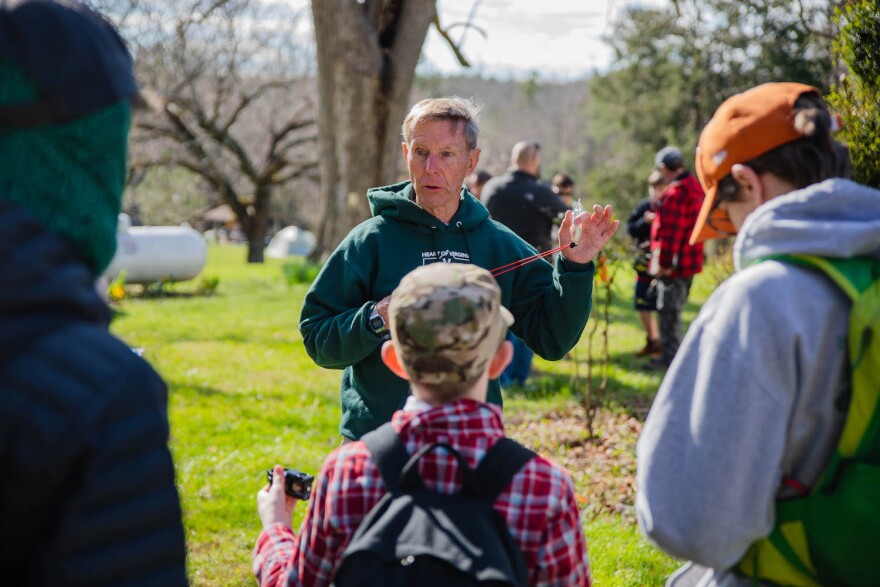On a windy day last month, over 200 scouts descended on the 568-acre Albright Scout Reservation in Chesterfield County to learn a skill known as orienteering in order to complete a badge requirement.
“Um, this is a compass, and I don’t think I really ever learned how to use these. I’m excited to find out,” says Boy Scout William “Mac '' MacDonald.
Using only a compass and map, he and his troop will follow a mile-long course around two lakes and through woods, looking for markers. They’re also required to learn the height and distance of objects farway, such as trees or flagpoles.
The maps the scouts follow don’t look like an ordinary road atlas. They feature specific geometric shapes. A triangle denotes the start of the course, and a double circle marks the finish. In between are circles noting checkpoints with numbered flags. Once they reach a marker, the scouts will punch a card indicating they found the right checkpoint. Maps are drawn using magnetic north rather than ‘grid’ or ‘true’ north and are printed in up to five standard colors. The colors are an integral part of the maps’ symbols.
But first, they need help from Scout leader and event organizer Kevin Kessler, who says a compass is a very simple tool that dates back more than a thousand years.
“This is the direction of the travel arrow. Okay? This is the most important part of the compass, in my humble opinion, because you always follow the direction of travel arrow. That's why it's called direction of travel arrow,” Kessler says.
Kessler then has the kids practice finding their bearings by pointing out a tree with a blue flag on it in the distance.
“Point your direction of travel arrow,” he says.
Pointing to numbers on the outside of the compass, known as a bezel, he continues, “You're gonna rotate it till that red is in the shed, so your needle is in the shed, okay?”
Kesseler says it’s important to get “the red in the shed,” which means move your body, not the compass. The magnetic needle is the “red” while the orienteering arrow is the “shed.” To follow a specific bearing, you want to line these two things up.
At the end of the day, Scout Evelyn says it took awhile for her group to find their groove.
“First, we kind of got lost because we didn’t know where we were going…and then we found it,” she says.
Her teammate, Claire says the experience taught her quite a bit.
“There are a lot of different navigation routes that you can make,” she says. “Like you can travel a different road, you can travel a trail, follow the water. We found out several different ways and saw different people heading different directions and mapping it out differently and I thought that was pretty interesting.”
You don’t need to be a scout in order to learn orienteering, there’s a Central Virginia chapter who puts on events monthly. And there are two parksin Chesterfield County that have beginner orienteering courses.

Ellen Stefaniak, who’s both the national and the local secretary for the Central Virginia club, says orienteering is fun and teaches important life skills like how to find your way around.
“It gives you a good spatial feel for the world around you that I don't think you get from a GPS,” she says. “There, you're just following the directions. And [with orienteering], you get relative distances, you understand about changes in elevation, you see the world around you in more detail.”
Stefaniak says there are more than 70 groups nationwide and all offer different levels of orienteering, from beginner to expert. Some groups even make competitions out of the skill and battle for the fastest time to complete a route.





